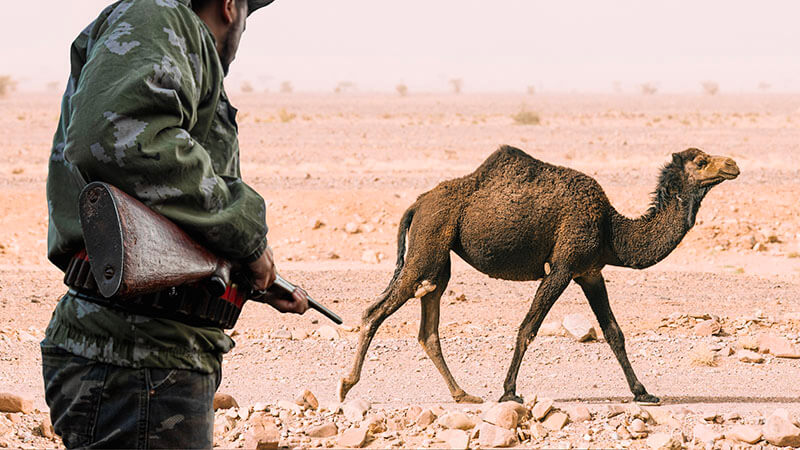
AE 1109 - The Goss
Millipedes & the Weird Evolution of Cave & Deep-Sea Creatures
Learn Australian English by listening to this episode of The Goss!
These are conversations with my old man Ian Smissen for you to learn more about Australian culture, news, and current affairs.

In today's episode...
Welcome to another Goss episode here on the Aussie English podcast!
In today’s episode, we talk about a mega millipede found in Australia.
A millipede is a crawling insect which is named so because it has so many legs. Despite being called ‘millipedes’, most species only have 750 legs or so.
Until recently, Australian scientists found a Eumillipes persephone to have a whooping 1,300 legs!
What if insects can wear shoes?
Join us today as we talk about this super millipede and the weird evolution of cave and deep sea creatures.
Is there anything you want to ask me? Drop in your questions here: https://aussieenglish.com.au/askpete
** Want to wear the kookaburra shirt? **
Get yours here at https://aussieenglish.com.au/shirt
Improve your listening skills today – listen, play, & pause this episode – and start speaking like a native English speaker!
Listen to today's episode!
This is the podcast player. You can fast-forward and rewind easily as well as slow down or speed up the audio to suit your level.
If you’d like to use the Premium Podcast Player as well as get the downloadable transcripts, audio files, and videos for episodes, you can get instant access by joining the Premium Podcast membership here.
Listen to today's episode!
Use the Premium Podcast Player below to listen and read at the same time.
You can fast-forward and rewind easily as well as slow down or speed up the audio to suit your level.
Transcript of AE 1109 - The Goss: Millipedes & the Weird Evolution of Cave & Deep-Sea Creatures
G'day, you mob. Pete here, and this is another episode of Aussie English. The number one place for anyone and everyone wanting to learn Australian English. So, today I have a Goss' episode for you where I sit down with my old man, my father, Ian Smissen, and we talk about the week's news whether locally down under here in Australia or non-locally overseas in other parts of the world.
Okay, and we sometimes also talk about whatever comes to mind, right. If we can think of something interesting to share with you guys related to us or Australia, we also talk about that in The Goss'. So, these episodes are specifically designed to try and give you content about many different topics where we're obviously speaking in English and there are multiple people having a natural and spontaneous conversation in English.
So, it is particularly good to improve your listening skills. In order to complement that, though, I really recommend that you join the podcast membership or the academy membership at AussieEnglish.com.au, where you will get access to the full transcripts of these episodes, the PDFs, the downloads, and you can also use the online PDF reader to read and listen at the same time.
Okay, so if you really, really want to improve your listening skills fast, get the transcript, listen and read at the same time, keep practising, and that is the quickest way to level up your English. Anyway, I've been rabbiting on a bit, I've been talking a bit. Let's just get into this episode, guys. Smack the bird, and let's get into it.
Alrighty, so true millipede, first true millipede. New species with more than a thousand legs discovered in Western Australia.
Exactly.
This was an epic story. I saw this come up and was like, I did a- I think it was on an expression episode where I was talking about the difference between centipedes and millipedes, and how there are no true millipedes with 1000 legs or more, but now there are. So, researchers named the subterranean animal...
It's a classic.
Yeah.
Eumillipes, which means true millipede.
Eumillipes and then Persephone, which is the Greek goddess of the underworld...
Persephone.
Persephone, is it?
Persephone. Yeah.
See, there I don't even know the emphases...
(both talking) ...Right syllable.
So, yeah, it's a crazy story where they found this millipede with 330 segments and 1,306 legs down, I think it was 60 metres underground in a mining area in the eastern goldfields of WA. So, they found it in a cave effectively, and it smashed the last record holder by like 550? 556 legs.
The previous record was set by Illacme plenipes, which is found in Central California and has up to 750 legs. So, very cool. So, it turns out, apparently, yeah, they were doing a biodiversity survey...
...Impact statement...
Yeah.
...For it. Yeah.
Yeah, in these caves, obviously probably tied in with mining of one sort or another, and they ended up finding these cool species.
I think some of the really cool stuff was that the reason that this species has so many legs is tied to why it's an underground animal and that it helps propel itself forward, or it gives it more grip, more purchase on the ground beneath it, so it's stronger and able to move around, I guess. And they were thinking, it's a fungi eater, I think all millipedes are actually herbivores, or at least...
Well, there's not much else that's going to be, you know, 60 metres underground in a cave. There's not much...
Other insects, other anthropods and other arthropods.
...And fungi, so.
Yeah. So, anyway, it was a really cool story. But yeah, just love insects. Love millipedes. Look at that 1,000...
It's not an insect.
Yeah. Well, you know what I mean?
Arthropod.
Arthropod. Well, do you want to explain that, dad? Why isn't it an insect?
We need a- Well...
You gotta do that, you can do that. People don't know.
Insects are a taxon, as in a group of living things that have basically three body parts and six legs. That's the easiest way- And external skeletons. So, that's the easiest way of talking about, so things like flies, wasp bees, ants, mosquitoes...
Beetles.
...Beetles, butterflies.
It's interesting, though, isn't it? Because we kind of use "bug" as just this sort of catchall phrase for anything that is an arthropod, right, anything that is kind of like crawling...
...Spider's a bug, but in fact, a bug is a particular order of a smaller taxon, a smaller group within insects. It's a particular group of insects that are called bugs.
Well, and we- Don't we use it as well for some crustaceans?
Yeah.
The sort of like...
Yeah, that's the common name.
Yeah, those- The bugs, yeah, they're not...
Moreton Bay bugs. Yeah.
So, it was cool, and I was sort of looking into- The thing I guess I find really cool about these sorts of arthropods, I guess, sort of like centipedes and millipedes is how much the number of segments their bodies have varies.
Yes.
It's interesting. Like I would love to know more about the evolutionary explanation for why say, insects don't just end up with many different thoraxes. I guess you would...
With eight parts of their body rather than three.
Yeah, exactly. Why didn't they end up with, you know, some have eight, some have ten, some have three, some have two. Whereas millipedes, it's almost like every species has a different number of...
Yeah.
...Of segments, which is effectively to explain it, it's kind of like the thing out of which the legs pop. You know, you see these multiple parts of the body...
Each segment will have four legs in these cases.
Yeah. And so, it always blows my mind. I would love to know more. I guess it's- Yeah, it would be so interesting as an evolutionary biologist, why would- What would be selecting for more or less segments, you know?
Well, I suppose it's getting longer, if you want, you know, if- There's an evolutionary advantage to being longer...
Yeah, well if you're underground you've got no predators.
Yeah, the only way to get longer in the case of these animals is to have more segments...
Yeah.
...Or one long segment. And one long segment, you're not- It's a- What is more likely to happen in an evolutionary context? That you're going to replicate something you've already got 300 of, or all of a sudden, you're going to have a longer segment that has eight legs instead of four. It's almost impossible to work out how you're going to get more legs on a single segment...
Well, and I looked this up, so...
...Replicating segments.
Yeah, I remember learning about this in biology, but it's Hox genes, H-O-X genes, and these type of- Well, I've got the explanation here. Hox genes are members of the homoerotic transcription factor family that play a key role in controlling the body plan along the cranial caudal axis, so head-tail axis of an animal, and specify segment identity of tissues within the embryo.
Mutations in Hox genes result in homeotic transformation of that tissue, that is one part of that tissue develops into another part of that tissue.
Yeah. So, you can basically replicate body parts, as in whole segments of body parts...
Well, effectively, all that happens is that gene duplicates, right? And then it codes for one more segment...
That's right.
...So, you would imagine that this millipede that has 330 body segments is going to have a corresponding number of genes, whether it's exactly one Hox gene for every single segment...
...Interesting to know- And obviously it's way beyond this article, and I don't know how many individuals of that, you know, type that they are calling a species they found. But it would be interesting to know if there- Is their variation in the number of segments within the species.
Yeah.
Is 330 the number or is it just something more than 300? Some have 320, some have 336. You know, it's- It would be interesting to know that.
Well, and so I looked it up here, too. There are certain species of snakes where they have vertebrae up to 300, right. And I guess this would be the equivalent in vertebrates, so things with backbones would be the number of bones in their backbone.
And it seems like- It's interesting. I think like giraffes, we think they have more bones in their neck right than-* Yeah, exactly. *Than we do. But they don't, they just have larger bones in their neck, and they still have whatever it is...
Whales, giraffes and humans have the same number of neck vertebrae.
Yeah, which is crazy when you think snakes, it varies a heap.
Yeah.
There can be some snake with, it says up to 300 or more vertebrae.
Yeah.
Whereas, you know, I would imagine... (both talking)
...That's a morphological equivalent of millipedes having more segments because vertebrae are little, just replications of the segment structure in the spinal cord of a vertebrate.
Yeah, I wonder if you could ever have a mutation...
Black kite flying around outside the window.
Not an actual kite, but a bird.
A bird, yes. A bird of prey. Yeah, it's not some kid flying a kite that happens to be black.
Yeah, I guess the equivalent in humans would be like if someone had the, whatever the genes are, when they're developing as an embryo for your hips and legs, would it duplicate, and you ended up with like the Human Centipede.
Yes.
Have you seen that movie, where you've got like three people attached to one another and they all have, you know, different limbs? But yeah, if that were to ever happen, it'd be sort of like that. But yeah, it is interesting. I wonder if things like millipedes and centipedes above ground that are more active would have fewer segments because it would mean there's less of them to grab onto for predators.
I think, you know, just from looking at this, and it looks more like a worm than a millipede.
Yeah.
The legs are clearly tiny. And I suspect the legs are not so much used for locomotion as used to hang on. So, they're really operating like a worm with legs, you know, little things stuck out the side of them, so. It- From just the look of it, you look at and go, that could not possibly survive on the surface.
Even regardless of it being grabbed by predators and things, it would just break. You know, so. You know, it's like a piece of string. You know, it's not a- It's not what we would typically see as a surface arthropod.
Why are animals underground usually so different? You want to talk about that a little bit? I find that really interesting. Like this millipede is white...
Yeah.
...Which is, I would imagine, a very rare colour for any kind of insect on above ground, maybe a moth or something, or a butterfly you'd see is white.
Underground and deep sea...
Yeah.
...Are the same things in that they're extreme environments in a sense that there is- They're extremely controlled and consistent environments.
And, well, they don't have light.
So, there's no light, the temperature doesn't change, the moisture won't change unless there is a catastrophic event.
So, you get these sort of weird- And, you know, it's- When we discover these animals that are, you know, and even plants, you know, fungi and so on that are living this far underground or, you know, animals that are living on, you know, undersea vents, you know, hot vents that are, you know, thousands of metres below the surface of the sea...
They're almost always white.
...They're almost always white, or they're almost always- They're not new types of animals, which you would sort of think this is a completely unique environment, now how come we're not discovering a completely new taxon, you know, large taxon, a new class of animals. Like, we've got insects and we've got, you know, spiders and now...
Effectively, aliens, right. Yeah.
...Now we've got an alien. Yeah. They're just variations on the theme, but they're these sort of bizarre variations because they are no longer subject to the same selection pressures that animals that are typically on the surface that have far more variable environments that they have to cope with, and different pressures of, you know, predation and competition and so on.
It's a bizarre sort of environment when you think about, what's it like living in the soil 60 metres below the surface? It's going to be the same for a million years.
Yeah.
And you don't need eyes, it's dark...
Well, and that was... (both talking)
...Because I suspect these are eating, you know, microbe, you know, small fungi and bacteria and stuff that is just going to be living in the soil around you. You're not going to have to go running around hunting.
That's some of the interesting thing- I'd need to look into this, but I have a feeling that caves and deep-sea environments tend to be relatively- What would you say? Lack kind of diversity...
Yeah.
...Quite a bit. They'll have a key- A few key species that kind of live there, but often like around the vents, you'll see there are shitloads of mussels...
And worms.
...Crabs and worms, and they kind of all have this symbiotic or, you know, the food chain is pretty set up there where the crabs' kind of eat whatever they can get. I remember, I think there's one where you see them and the worms coming out of the tubes, put their red, I don't know what you would call them, like tendrils out to try and grab floating things by.
And the crabs are constantly sitting at the top kind of trying to grab one of the tendrils to eat, you know. And so, it's- It is really interesting. But they're all white, you know, except for the tendrils which are red for whatever reason.
...The thing is, that producing pigment...
Costs money.
Yeah.
Well, energy. Money?
Yes. Well, it costs energy. And it's not just energy in the sense of actually producing it, but energy to maintain metabolic pathways in order to keep producing it.
Yeah.
So, anything that you can- If you can get an advantage in terms of the amount of energy that you're expending by stopping doing things, then you know, like we have stopped doing video.
Yeah.
We're now just doing audio podcasts, so, you know, then there's an advantage to that because you can spend your energy on something else, or you don't need to go and collect as much energy. And that's the challenge in many cases, is just finding food. And if you can reduce your energy intake, sorry, your energy expenditure to account for the fact that you don't have as big an energy intake, then you're going to be okay, so.
Yeah, that was always one of those really interesting things to learn about with biology and evolution that there's that constant trade off. Like if you think of an animal is going to get over its lifetime, a certain amount of energy, you know, say a hundred.
It gets to put that energy into different things like sperm production, body size, tooth size, and it has to kind of weigh these- Well, like not personally, but like on an evolutionary scale, it has to work out, or evolution works out for it, which of these are most important?
So, like I think one of the memories that I have from the evolutionary class is like the rhinoceros beetles that have those massive horns on them that are effectively, they come up head-to-head on logs, and the goal is for them to throw one another off the log. To lift one another up using their pincers or their horns and, you know, defeat their adversary.
But if in growing larger weaponry, you know, horns and pincers, they take the energy from that bucket of energy that they get throughout their entire life from sperm production...
Yes.
...And so, they- There's this beautiful balance between how much energy the animal can spend on weaponry and how much it needs to hold on to, to produce sperm to be able to reproduce with the females. Because obviously, if you spend all of your limited number of, or units of energy on just weapons, you max that out and you have nothing for sperm you can't pass on those genes. So, you get selected out.
...Whole bunch of sperm, but you don't get the opportunity to use them, use it, then it's a waste of energy.
Yeah.
And that's, you know, as you know, I'm in a study as an evolutionary biologist as well. And that was the- I suppose, the thing that I found most interesting studying biology was trying to work out and understand from an evolutionary perspective what the costs and benefits were for any organism's lifestyle, and how those lifestyles have evolved to account for all of those costs and benefits because there's never one or the other.
I mean, the one you gave was a good example...
...Trade-offs, right.
...Is a trade-off.
Yeah.
But there are usually 50 of those, and each one of them is trading off against the others. And so, just contemplating those things is a really interesting thing to sort of spend your life doing, I think, so.
Well, yeah. And arms races, right, where once you have animals interacting with one another and different species, and like lions and antelopes, for example, the antelope has to get more fleet of foot, faster and faster and faster.
But in doing so, it becomes more fragile and frail, right? And so, it can slip up and break a leg pretty easily. The same reason that horses can break legs pretty easily. And lions, as a result, have to kind of get faster and faster and faster, and so they have that trade off, too, of size versus speed.
I think it's the same with like cheetahs, right? Cheetahs have to get- They're the fastest land animal, but as a result, they're incredibly frail...
Yeah, if they got any faster, they would break their legs.
Yeah, and they can't fight, like if they were to catch something a lot of the time their food's stolen...
Yes.
...From other animals.
Because they can't defend it.
Exactly. And those other animals can afford to sort of give up needing to be able to chase animals down, so things like hyenas or lions, although lions do quite a lot, because they are able to also steal from other animals that are better at capturing.
...Bigger and stronger.
So, it is amazing to see that evolution isn't this active force- Or natural selection isn't this active force that determines anything, but this kind of natural process of settling on these kind of traits...
It's a whole lot of- It's a multi-dimensional equilibria, you know, of forces that are operating. Speaking of which, completely random, I don't know whether you saw- I haven't found a print article for it yet. Did you see the news last night? There was a 2 minute, 30 second grab on the news of a lioness who was shielding and helping a baby wildebeest get back to its mother.
I assume that would have been because the lioness had just given birth.
Don't know. Presumably, yeah, I expect it was this maternal instinct thing, but it was just bizarre watching this- And the wildebeest was clearly less than a day old as well. It was wobbly on its legs and things, this tiny little thing walking, almost touching the haunches of this lion. And apparently the lioness effectively- I don't know. It took it back but protected it until it got back to its herd.
Yeah, found it on here.
Yeah.
So, let's see. Astonishing footage has emerged of a lioness appearing to lead a lone wildebeest calf back to its herd in what a wildlife official has described as an act of love. The Tanzania National Parks official Twitter account posted the video Monday in which a lioness is seen walking side by side with a plucky wildebeest calf half her size as she escorted the baby animal back to the safety of in the Serengeti National Park.
Such behaviour is highly unusual and has led Pascal Shelutete, the spokesman for the Tanzania National Parks Authority, to tell the BBC the Lionesses maternal instincts must have overcome her natural, predatory instincts.
Yeah, that's why I said, I think she would have been- She would have had- Haven't- Having just given birth.
Yes, but it's astonishing footage...
It's pretty weird, isn't it?
...Look at it and go, what?
I've seen a few of those, though, especially with lionesses for some reason. I don't know, maybe jaguars, too, where they, for whatever reason, they've just given birth, and they must have this huge amount of, you know, hormones going through their systems that are...
Oxytocin...
...Don't be violent, take care of your babies' kind of hormones. And they're not killing...
Baby wildebeest fits in the same pattern as Baby Lion...
Yeah.
...So. Yeah, as your mother, when we were watching this on TV last night, as she turned around and said at the end of it, she said, so that lioness, when she dropped it off back at the herd and said, I'll be back for you when you've grown up.
Yeah. Yeah, you better not become the sickest one in your herd, or you'll be taken out. It is pretty weird how those sort of aberrations occur.
Yeah.
Like, I always wonder how things end up mutually working together. You know, like a good example of that evolutionarily would be the mantis shrimp and the- Is it a guppy or something? The fish. They both live in the same hole, right?
And so, the mantis shrimp is effectively the protection, the muscles and the fish is the thing the digs the hole out and moves the rocks out. And so, the mantis shrimp is just sitting there with its pincers. It's the thing that can like...
It's the defender.
Well, they're these weird shrimp that have this weird claw that has the ability to break the sound barrier, I think when they click it or create a sonic boom, effectively, right. So, they're creating this explosion that I think- And I think within that explosion that they create when they click their pincer, they do it at such a speed and with such power, even though they're tiny, that it creates this explosion of gas.
And apparently that's hotter than the surface of the Sun for a millisecond, right, when that happens. But you're like, how does that evolve? Is it a one-time thing where one mantis shrimp, for whatever reason, paired up with a guppy and they ended up both reproducing and passing on those genes? Or is it the kind of thing where the two species are sort of at an interface, interacting...
...Just hanging around...
...And it just repeatedly happens until it becomes the norm? Yeah, those sorts of mutualism, where they're two different species working together to benefit one another as well as themselves, that always just blows my mind how that happens, right.
It is interesting.
Anyway, we should probably finish up there.
We should...
Chat next time, guys. See ya.
Bye.

Listen & Read with the Premium Podcast Player
Get more out of every episode!

Premium Podcast members get access to...
- All 900+ podcast episodes including member-only episodes
- Member-only episode video lessons
- Downloadable transcript PDFs & audio files for every episode

Recent Episodes:


AE 1299 – Pete’s 2c: Do You Ring, Call, or Dial Someone on the Phone in Australia?

AE 1298 – Learn English with a Short Story: Day at the Beach

AE 1297 – The Goss: How ‘Dropping In’ Culture Has Changed in Australia

AE 1296 – The Goss: Gorilla Glasses & Dad’s Crazy Zoo Stories – MEMBERS ONLY

AE 1295 – The Goss: Australia’s Most & Least Ethical Jobs

AE 1294 – The Goss: Australia Just Had the Best Aurora in 500 Years!

AE 1293 – The Goss: Should Aussie Schools Ban Homework?

AE 1292 – How Aussie Do Asian Australians Feel? r_AskAnAustralian

Share

Join my 5-Day FREE English Course!
Complete this 5-day course and learn how to study effectively with podcasts in order to level up your English quickly whilst having fun!

Join my 5-Day FREE English Course!
Complete this 5-day course and learn how to study effectively with podcasts in order to level up your English quickly whilst having fun!


Want to improve a specific area of your English quickly and enjoyably?
Check out my series of Aussie English Courses.
English pronunciation, use of phrasal verbs, spoken English, and listening skills!

Have you got the Aussie English app?
Listen to all your favourite episodes of the Aussie English Podcast on the official AE app.
Download it for FREE below!



Want to improve a specific area of your English quickly and enjoyably?
Check out my series of Aussie English Courses.
English pronunciation, use of phrasal verbs, spoken English, and listening skills!
Leave a comment below & practice your English!






Responses